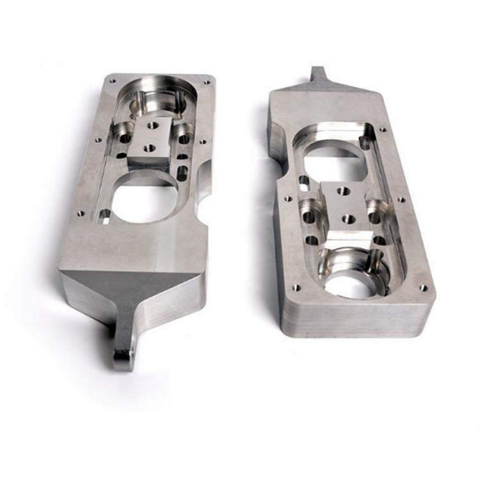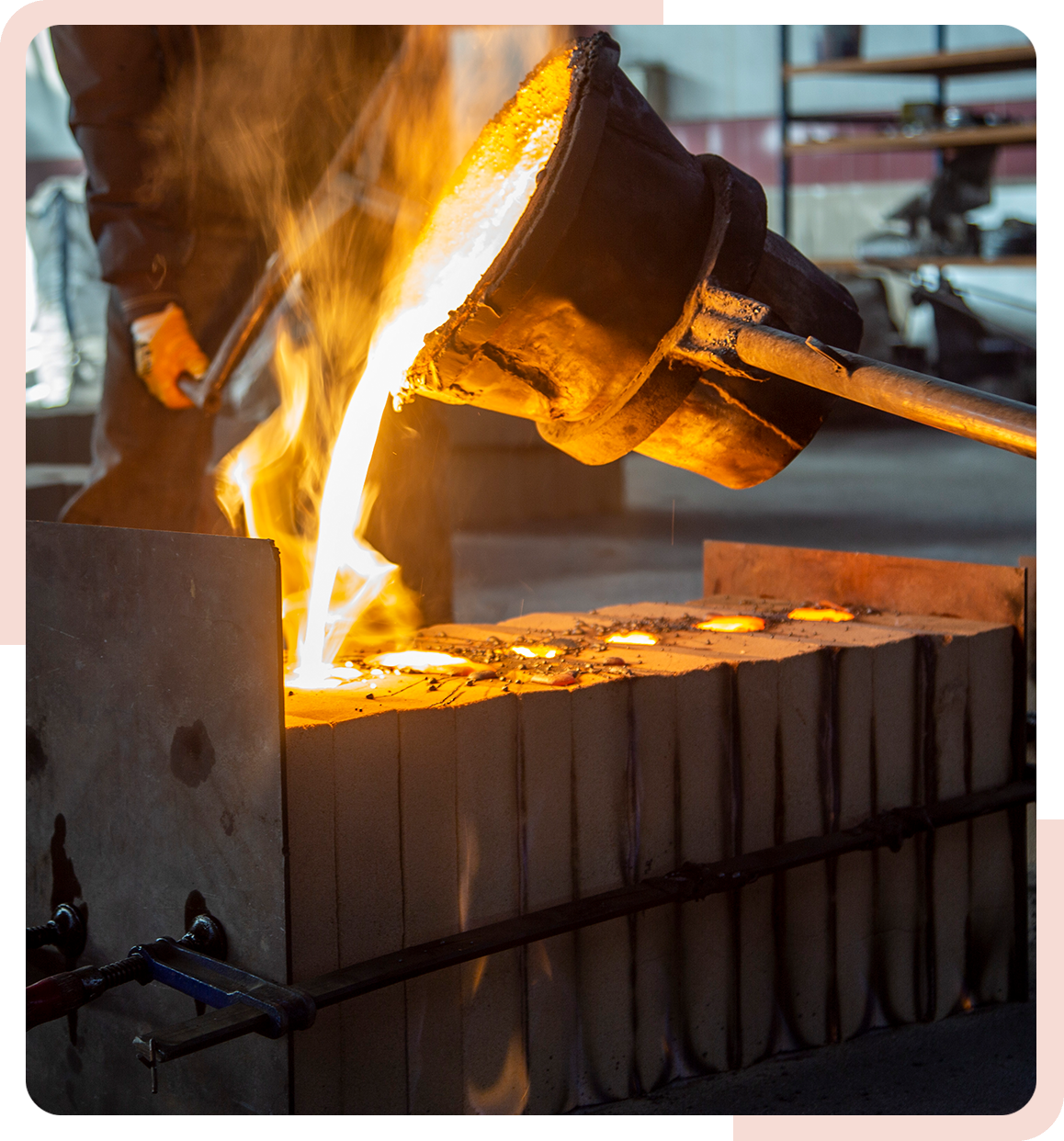Understanding how an Aluminum Foundry maintains accuracy standards
Recognizing the Ecological Advantages of Aluminum Shop Techniques
Aluminum foundry techniques play an essential role ahead of time sustainability within the manufacturing market. By executing sophisticated recycling techniques and energy-efficient techniques, these strategies considerably lower waste and carbon impacts. Cutting-edge casting methods additionally improve source conservation initiatives. As sectors significantly prioritize ecological duty, recognizing the complete effect of these methods ends up being essential. What certain improvements are leading the way in this improvement?
The Duty of Aluminum in Lasting Production
Numerous products contribute to sustainable production, aluminum stands out due to its distinct buildings and recyclability. This light-weight metal is not just long lasting but also has superb rust resistance, making it an excellent choice for numerous applications, from automobile to building. Its high strength-to-weight ratio results in energy cost savings throughout transportation and use. In addition, light weight aluminum can be recycled indefinitely without shedding its fundamental qualities, promoting a round economic climate.
The manufacturing procedure of light weight aluminum has actually progressed, including energy-efficient approaches that reduce carbon footprints. By using sustainable energy sources, manufacturers are significantly lessening the environmental influence related to light weight aluminum manufacturing. Additionally, the usage of recycled light weight aluminum calls for considerably less power compared to drawing out and fine-tuning key aluminum, bring about lower greenhouse gas discharges. As sectors look for sustainable options, light weight aluminum's flexibility and environment-friendly features setting it as a crucial material in the pursuit of greener production practices.
Advanced Recycling Techniques in Aluminum Foundries
Advanced recycling methods in aluminum factories are reinventing the means scrap aluminum is processed and reused. Innovative methods, such as closed-loop recycling systems, make it possible for shops to reclaim aluminum from manufacturing waste and outdated products successfully. These systems minimize material loss and enhance the high quality of recycled aluminum, making it a viable option to main light weight aluminum manufacturing.
Furthermore, progressed sorting modern technologies, consisting of automated optical sorting and X-ray fluorescence, improve the separation of light weight aluminum from various other materials, ensuring greater purity degrees in recycled outcomes. This precision decreases contamination, which can endanger the stability of the last product.
Furthermore, the assimilation of innovative melting modern technologies, such as induction melting and energy-efficient heating systems, streamlines the recycling process, decreasing energy intake. Jointly, these technologies add to a more sustainable aluminum sector by minimizing reliance on virgin materials and lowering greenhouse gas exhausts connected with light weight aluminum production.
Energy Effectiveness Improvements in Factory Procedures
Power effectiveness renovations in light weight aluminum foundry operations can substantially improve sustainability practices. Applying waste warmth recuperation systems permits shops to repurpose excess power, reducing total power usage. Additionally, developments in procedure automation streamline operations, bring about minimized waste and maximized source use.
Waste Heat Healing
Carrying out waste heat healing systems in aluminum factories substantially improves power performance by recording and recycling excess thermal power produced throughout manufacturing procedures. These systems help with the conversion of thrown away warmth into functional energy, which can be used for various applications within the foundry, such as powering or pre-heating products devices. By recovering warm that would certainly or else be removed into the atmosphere, foundries can noticeably minimize their overall energy intake and greenhouse gas emissions. This strategy not just lowers operational prices but likewise promotes lasting techniques within the industry. Additionally, the adoption of waste warm healing technologies aligns with governing criteria intended at lowering environmental effect, making it a vital element of modern aluminum factory procedures.
Refine Automation Conveniences
Automating procedures in aluminum shops can substantially improve energy efficiency by maximizing production process and minimizing waste. By carrying out innovative innovations such as robotics and maker learning, factories can improve procedures, decreasing unnecessary energy intake. Automated systems promote accurate control over temperature and material handling, guaranteeing that power is used only when required. Furthermore, real-time tracking allows for immediate changes, lowering the danger of energy loss. The combination of automation not just enhances performance yet also lowers functional expenses, making factories a lot more competitive. Because of this, these energy-efficient practices contribute substantially to sustainability objectives, reducing the ecological impact of light weight aluminum manufacturing while satisfying raising market demands - Aluminum Casting Company. Boosted energy efficiency via automation stands for a crucial look at this site action in the direction of greener factory operations
Minimizing Waste Through Cutting-edge Casting Methods
Ingenious spreading methods play an important duty in decreasing waste in light weight aluminum foundries. Techniques such as advanced molding and the utilization of recyclable products greatly decrease production scrap. These methods not only boost performance however additionally add to a much more lasting production procedure.
Advanced Molding Techniques
As markets significantly focus on sustainability, progressed molding methods in aluminum foundries emerge as effective options for reducing waste. These cutting-edge approaches, such as 3D printing and precision mold production, significantly boost the performance of the casting process. By utilizing computer-aided design (CAD) and simulation modern technologies, suppliers can enhance mold and mildew geometry, lessening product use while keeping item stability. Additionally, progressed strategies enable the production of complicated shapes that standard techniques can not accomplish, reducing the need for additional machining and thereby decreasing scrap product. The versatility of these methods enables rapid prototyping, further reducing lead times and energy consumption. On the whole, the implementation of advanced molding techniques stands for a vital step towards environmentally responsible light weight aluminum manufacturing, straightening with worldwide sustainability goals.
Recyclable Product Usage
Recyclable products play a pivotal duty in minimizing waste within aluminum foundries, transforming the casting landscape via their effective usage. By including scrap light weight aluminum and various other recyclable elements into the manufacturing procedure, shops can considerably lower the need for virgin materials. This not only preserves natural deposits however likewise reduces energy consumption connected with mining and refining. Ingenious spreading methods, such as die spreading and sand spreading, allow for seamless assimilation of these materials, ensuring high-grade outputs. The usage of recyclable materials promotes a round economy, where resources are continually reused and repurposed, minimizing landfill contributions. Eventually, the critical usage of recyclables enhances sustainability while promoting cost-effectiveness in light weight aluminum factory procedures.
Reducing Manufacturing Scrap

Life Process Evaluation of Light Weight Aluminum Products
Aluminum is commonly identified for its lightweight and durable residential or commercial properties, a detailed Life Cycle Analysis (LCA) exposes the ecological impacts connected with its disposal, manufacturing, and use. The LCA process examines the energy usage, greenhouse gas exhausts, and resource exhaustion connected to click here now light weight aluminum products from removal of bauxite ore to end-of-life administration. Main light weight aluminum manufacturing is energy-intensive, typically counting on nonrenewable fuel sources, which adds considerably to carbon footprints. In comparison, reusing aluminum supplies substantial environmental benefits, as it uses only a portion of the energy required for key manufacturing. Additionally, the recycling process decreases landfill waste and saves natural resources. The LCA likewise thinks about the item's longevity and possibility for reuse, highlighting the importance of lasting layout. Generally, understanding the life process influences of light weight aluminum items is essential for making notified choices that focus on ecological sustainability within the market.
Situation Studies: Successful Lasting Practices in the Industry
The aluminum market has begun to embrace cutting-edge lasting methods that resolve the ecological obstacles determined in Life Cycle Evaluations. One remarkable situation is a leading foundry that implemented a closed-loop recycling system, significantly decreasing waste and energy intake. By reusing additional info scrap light weight aluminum in manufacturing, the facility accomplished a 40% reduction in its carbon impact.
An additional example involves a supplier that embraced renewable power resources, powering its operations with solar and wind energy - Aluminum Casting Company. This change not just lowered greenhouse gas exhausts however additionally improved the business's track record among eco mindful consumers
Furthermore, a 3rd factory has actually purchased sophisticated casting techniques, which enhance product usage and minimize problems, better decreasing resource consumption. These instance studies highlight that the light weight aluminum industry can incorporating lasting techniques, demonstrating both environmental obligation and economic feasibility, eventually adding to an extra lasting future.
Often Asked Concerns
Exactly How Does Light weight aluminum Compare to Various Other Steels in Sustainability?
Aluminum is generally taken into consideration extra lasting than numerous metals due to its recyclability, reduced power needs for manufacturing, and reduced ecological impact. Its lifecycle performance exceeds that of steel and copper in different applications.
What Is the Carbon Impact of Light Weight Aluminum Shop Processes?
The carbon impact of aluminum foundry processes differs, commonly ranging from 4 to 15 statistics lots of CO2 per lots of light weight aluminum generated. Elements influencing this consist of energy resources, innovation, and the efficiency of operations.
Are There Health Threats Related To Aluminum Factory Procedures?

What Are the Expenses Connected With Lasting Light Weight Aluminum Techniques?
The expenses related to lasting aluminum methods include higher first financial investments in innovation, prospective increases in operational expenses, and continuous upkeep. These are frequently balanced out by lasting savings and reduced environmental impact.

Just How Does Light Weight Aluminum Recycling Impact Citizen Communities?
Aluminum reusing favorably impacts regional communities by developing jobs, lowering landfill waste, and decreasing power prices. It fosters economic growth and advertises environmental stewardship, leading to much healthier living conditions and improved neighborhood involvement in sustainability campaigns.
Additionally, the use of recycled light weight aluminum calls for considerably much less power contrasted to extracting and refining primary aluminum, leading to lower greenhouse gas discharges. Advanced recycling strategies in aluminum shops are reinventing the way scrap aluminum is processed and recycled. Aluminum Foundry. Executing waste warm healing systems in light weight aluminum shops considerably improves energy performance by recording and recycling excess thermal energy created throughout manufacturing procedures. Automating processes in aluminum shops can substantially improve power performance by maximizing manufacturing process and minimizing waste. The carbon footprint of light weight aluminum shop procedures differs, usually varying from 4 to 15 metric loads of CO2 per load of light weight aluminum produced